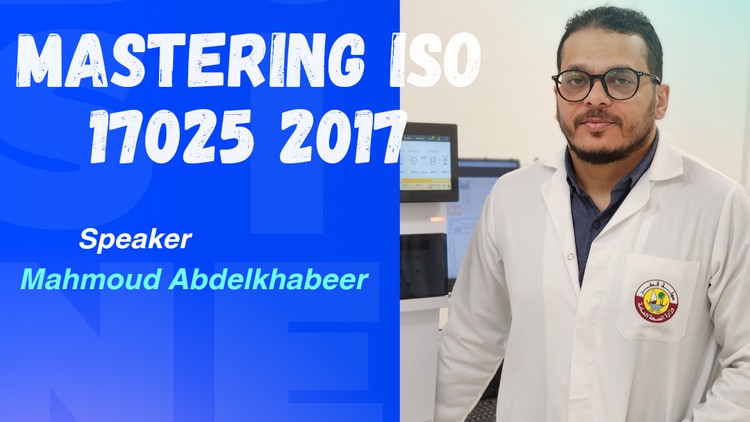
Plain and Simple Clause by Clause Explanation of ISO 17025:2017 QMS Standard & Implementation Strategies
What you will learn
Detailed requirements for each clause of ISO/IEC 17025: 2017
Comparison between ISO/IEC 17025: 2017 & 2005 edition
How to implement each clause to complete lab Quality management system and get accreditation
How to prepare your lab for accreditation according to ISO/IEC 17025: 2017
Description
In this training, you will not only learn the requirements but also how to prepare required documents and I kept many resources related to this. So, after you will finish the course you will be able to prepare all documents and you will not feel lost.
Do not miss this chance to learn with the best training course about ISO 17025/2017, even if you get that course online or onsite do not miss this chance because you will feel different after this course.
This training course is intended for personnel working in the field of laboratories weather testing or calibration on the requirements of ISO/IEC 17025: 2017 ‘General requirements for the competence of testing and calibration laboratories’. explaining all clauses of the ISO/IEC 17025: 2017 document in a straightforward and detailed way. Also how to implement and prepare all procedures and forms required for each clause to be accredited included with an overview of how to plan to prepare your lab for accreditation to become independently accredited.
The course covers also a comprehensive comparison between ISO/IEC 17025: 2005 and 2017 editions and focuses more on the new points added such as decision rules, risk-based approach, opportunities, and continual improvement including very good supporting lectures on how to use decision rules based on ILAC G8, how to quantify measurement uncertainty for sampling using nordtest guideline and the difference between method validation and verification.
The course addresses the relationship between ISO/IEC 17025 and ISO 9001; the difference between certification and accreditation, and an overview of the content of ISO/IEC 17025 followed by an in-depth examination of each clause of the standard. These include impartiality, confidentiality, organization and responsibilities, personnel, facilities and environment, equipment, traceability, purchasing, subcontracting, contract review, methods, sampling, measurement uncertainty, quality control, reporting, complaints, nonconformance handling, IT systems, records, document control, risks and opportunities, corrective action, improvement, internal audit, and management review.
The course also covers typical management system documentation structures and a roadmap of the steps required to implement the standard. The course also covers the history of ISO/IEC 17025 and the role of accreditation bodies and the process of obtaining independent recognition as well as the subject of scopes of accreditation.
This course is very important for laboratories in the field of testing and calibration that need to be accredited according to ISO/IEC 17025: 2017, if they are not accredited or accredited according to ISO/IEC 17025: 2005 or ISO/IEC 9001:2015 and need to complete technical requirements. Beginners or students and experience analysts or even technical and quality managers can use this training course because I tried to make it very simple for beginners and detailed for all.
Supporting lecture to understand the difference between method validation and verification.
Another supporting lecture for calculation of measurement uncertainty for sampling in detailes as per nordtest guideline.
Very important lecture provided also to know how to use decision rules inside your lab and to get more details about that important subject acc to ILAC guideline.
Content